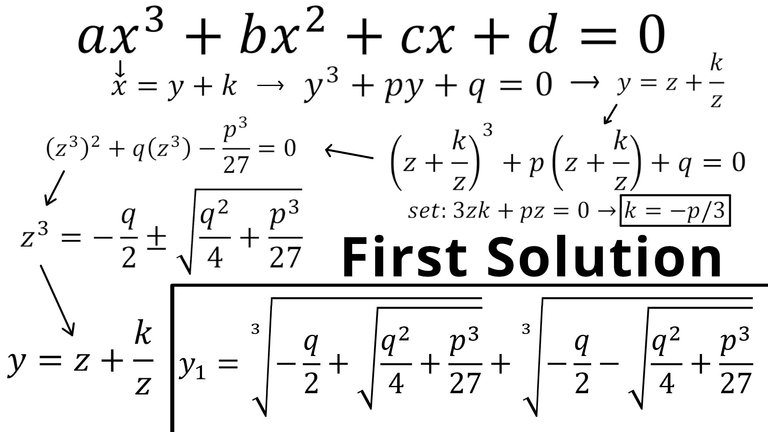In this video I go over the third step of the Cubic Formula proof which involves plugging our z value back into Vieta's substitution to obtain our first y solution. Recall that in Step 1 we removed the x-squared term from the cubic equation via PQ substitution, and in Step 2 we used Vieta's substitution to obtain a quadratic formula. For Step 3, and since the previous quadratic formula obtained two solutions, we start by plugging in the positive version into Vieta's substitution. After some algebra via conjugate multiplication, we obtain the first solution for y (before we have to plug it into our PQ substitution to obtain x), which has both the positive and negative versions of the quadratic formula solution. This also means that if plugged in the negative version into Vieta's substitution, we would still obtain the positive, thus it doesn't matter which version we plug in!

Timestamps
- Step 3: Find first solution for y using the plus sign for z-cubed and plug into y: 0
- Multiply fraction by the conjugate of its denominator to cancel out terms: 3:10
- First solution of y: 7:40
- The solution obtains both the plus and minus versions of Vieta's quadratic formula: 8:26
Notes and playlists
- Playlist: https://www.youtube.com/playlist?list=PLai3U8-WIK0EF05ExjzLbB64NgUjoV1hl
- Notes: https://peakd.com/hive-128780/@mes/dzekfnxh .
Become a MES Super Fan! https://www.youtube.com/channel/UCUUBq1GPBvvGNz7dpgO14Ow/join
DONATE! ʕ •ᴥ•ʔ https://mes.fm/donate
SUBSCRIBE via EMAIL: https://mes.fm/subscribe
MES Links: https://mes.fm/links
MES Truth: https://mes.fm/truth
Official Website: https://MES.fm
Hive: https://peakd.com/@mes
Email me: contact@mes.fm
Free Calculators: https://mes.fm/calculators
BMI Calculator: https://bmicalculator.mes.fm
Grade Calculator: https://gradecalculator.mes.fm
Mortgage Calculator: https://mortgagecalculator.mes.fm
Percentage Calculator: https://percentagecalculator.mes.fm
Free Online Tools: https://mes.fm/tools
iPhone and Android Apps: https://mes.fm/mobile-apps
▶️ 3Speak